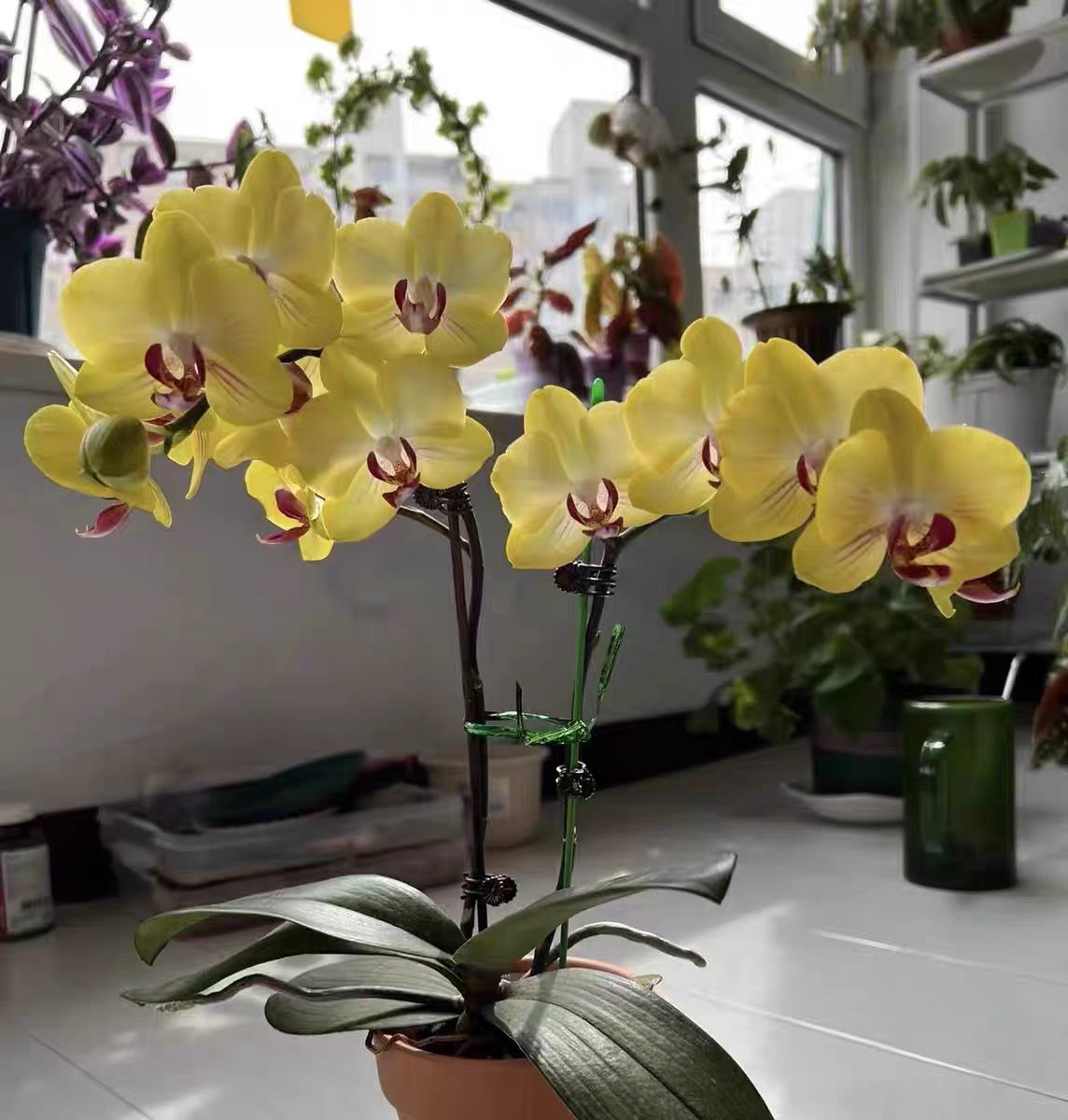Many orchid enthusiasts may not be very familiar with the maintenance of Phalaenopsis orchids, especially the fertilization management after division. Division is a common method for cultivating new plants, and the fertilization management after division is a crucial part to ensure the healthy growth of Phalaenopsis orchids. Mastering the correct fertilization timing and method can help the divided Phalaenopsis orchids thrive.
After the division of Phalaenopsis orchids, the root system will be damaged to a certain extent and needs time to recover and adapt to the new environment, so fertilization should not be carried out immediately. Generally speaking, it is necessary to wait for 1 - 2 months before fertilizing the divided Phalaenopsis orchids. During this period, the plant will focus on repairing the damaged roots and germinating new roots.
If fertilization is carried out too early, the chemical substances in the fertilizer cannot be effectively absorbed by the roots, and may also cause secondary damage to the unrecovered roots, resulting in root burning, which affects the survival of the plant. To judge whether the Phalaenopsis orchid can be fertilized, one can observe the growth state of the plant. When new roots grow and new leaves begin to germinate, it means that the root system has a certain absorption capacity, and it is appropriate to fertilize at this time.
How to fertilize after division
Selecting the right fertilizer: In the early stage of growth of the divided Phalaenopsis orchid, nitrogen - based fertilizers should be used, together with appropriate amounts of phosphorus and potassium fertilizers. Nitrogen fertilizers can promote the growth of leaves and stems, while phosphorus and potassium fertilizers are helpful for root development and enhancing the plant's resistance. For example, compound fertilizers rich in nitrogen, phosphorus, and potassium can be selected, or diluted urea solutions can be used. Special orchid nutrient solutions can also be chosen. The nutrient ratio of these fertilizers is more scientific and can meet the growth needs of Phalaenopsis orchids.
Controlling the fertilization concentration and frequency: The fertilization concentration must be strictly controlled, following the principle of "applying thin fertilizers frequently". The divided Phalaenopsis orchids are relatively fragile, and high - concentration fertilizers are likely to cause fertilizer damage. Generally speaking, the dilution multiple of compound fertilizers should be about 1000 - 1500 times, and the orchid nutrient solution should be diluted according to the product instructions. The fertilization frequency should not be too high, usually once every 10 - 15 days. As the plant grows stronger, the fertilization concentration and frequency can be appropriately increased.
Fertilization methods: For fertilizing the divided Phalaenopsis orchids, a combination of root - watering and foliar - spraying methods can be adopted. When root - watering, slowly pour the diluted fertilizer onto the substrate around the root of the plant, allowing the fertilizer to fully penetrate around the root system. For foliar - spraying, use a sprayer to evenly spray the fertilizer solution on the leaf surface, making sure to cover both sides of the leaf to improve the nutrient absorption efficiency of the leaves. However, it should be noted that after foliar - spraying, a good ventilation environment should be ensured to avoid diseases caused by the leaves being wet for a long time.
The fertilization management of Phalaenopsis orchids after division is a meticulous and important task. By selecting the right fertilizer, mastering the correct fertilization method, and paying attention to the management after fertilization, it is possible to ensure that the Phalaenopsis orchid receives sufficient nutrient supply after division, thereby promoting its healthy growth and flowering.
How long should one wait to fertilize Phalaenopsis orchids after division?

Share with
Tagged in :




Leave a Reply